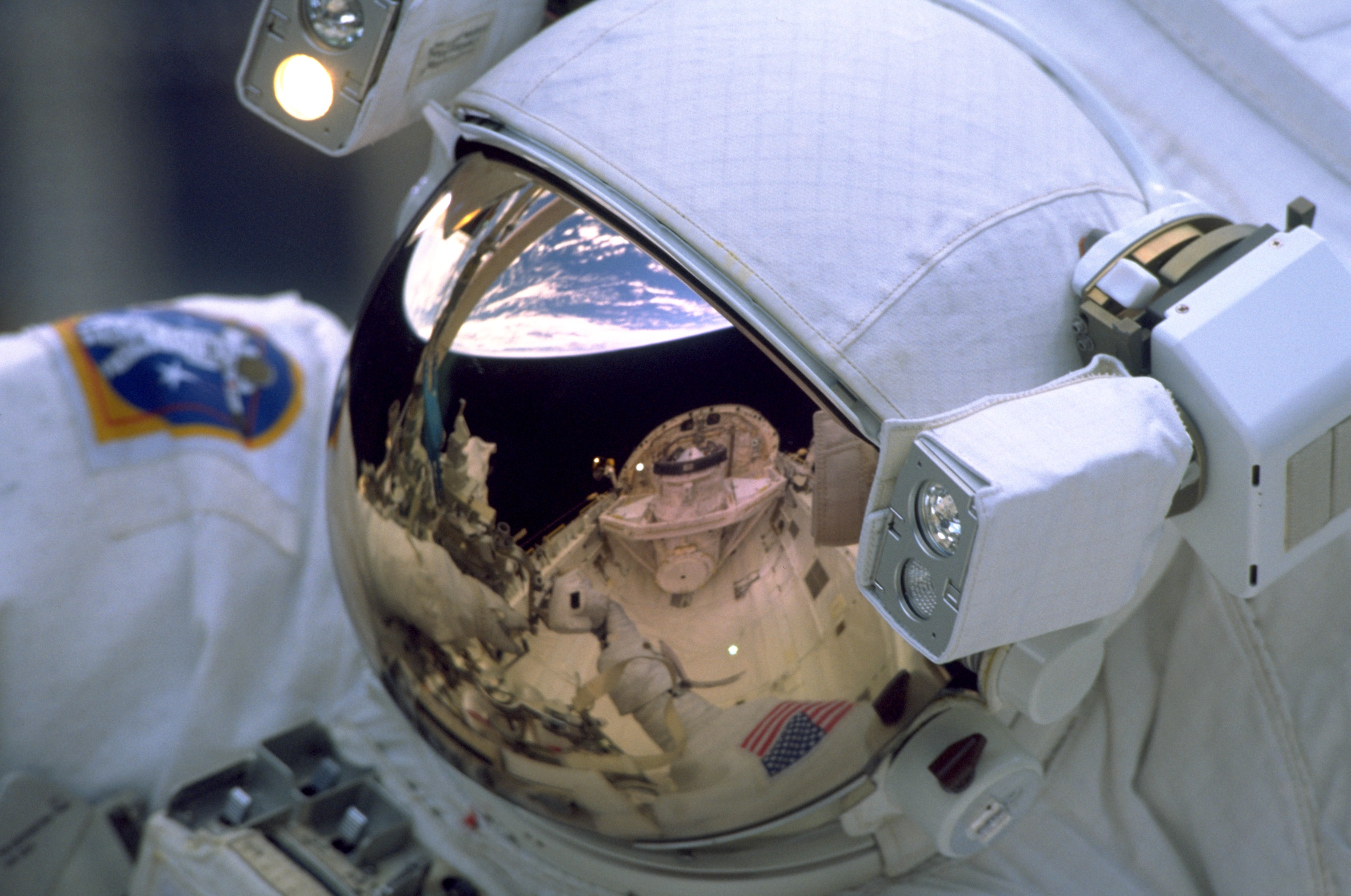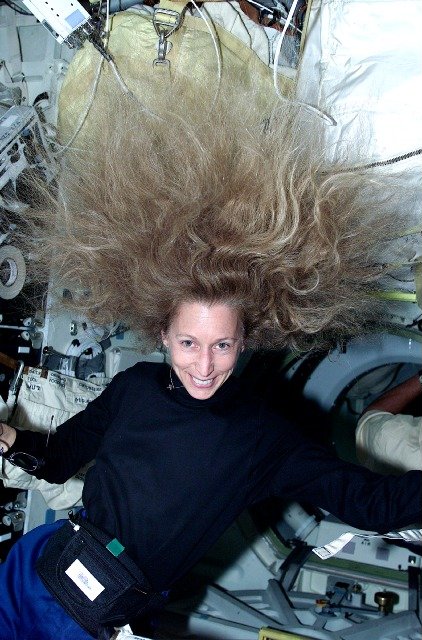|
Bioastronautics
Bioastronautics is a specialty area of biological and astronautical research which encompasses numerous aspects of biological, behavioral, and medical concern governing humans and other living organisms in a space flight environment; and includes design of payloads, space habitats, and life-support systems. In short, it spans the study and support of life in space. Bioastronautics includes many similarities with its sister discipline astronautical hygiene; they both study the hazards that humans may encounter during a space flight. However, astronautical hygiene differs in many respects e.g. in this discipline, once a hazard is identified, the exposure risks are then assessed and the most effective measures determined to prevent or control exposure and thereby protect the health of the astronaut. Astronautical hygiene is an applied scientific discipline that requires knowledge and experience of many fields including bioastronautics, space medicine, ergonomics etc. The skills ... [...More Info...] [...Related Items...] OR: [Wikipedia] [Google] [Baidu] |
Laurel Van Der Wal
Laurel van der Wal (September 22, 1924 – August 13, 2009) was an American aeronautical engineer who is known for contributions to bioastronautics. She was named the ''Los Angeles Times's'' "1960 Woman of the Year in Science" for her contributions to the field. Early life and education Laurel van der Wal was born in San Francisco, the daughter of Lillian and Richard van der Wal, both from Spokane, Washington. Her mother was a former teacher and an alumna of the University of Washington; her father was a businessman. She graduated from high school at age 15, and worked as a model, an art instructor, a deputy sheriff, a showgirl, a railroad switch tower operator, and a casino shill as a young woman. "I am impatient with people who do not make full use of all their capabilities," she explained in 1962. She admired pilots and hoped to earn a pilot license, but instead worked as an aircraft mechanic during World War II, at Hamilton Air Force Base. She decided to pursue further e ... [...More Info...] [...Related Items...] OR: [Wikipedia] [Google] [Baidu] |
Space Habitation
Human presence in space is about humanity in space, particularly about all anthropogenic presence in space and human activity in space, that is in outer space and in a broader sense also on any extraterrestrial astronomical body. Humans have been present in space either, in the common sense, through their direct presence and activity like human spaceflight, or through mediation of their presence and activity like with uncrewed spaceflight, making "telepresence" possible. Human presence in space, particularly through mediation, can take many physical forms from space debris, uncrewed spacecraft, artificial satellites, space observatories, crewed spacecraft, art in space, to human outposts in outer space such as space stations. While human presence in space, particularly its continuation and permanence can be a goal in itself, human presence can have a range of purposes and modes from space exploration, commercial use of space to space settlement or even colonization and milit ... [...More Info...] [...Related Items...] OR: [Wikipedia] [Google] [Baidu] |
Astronautical Hygiene
Astronautical hygiene evaluates, and mitigates, hazards and health risks to those working in low-gravity environments. The discipline of astronautical hygiene includes such topics as the use and maintenance of life support systems, the risks of the extravehicular activity, the risks of exposure to chemicals or radiation, the characterization of hazards, human factor issues, and the development of risk management strategies. Astronautical hygiene works side by side with space medicine to ensure that astronauts are healthy and safe when working in space. Overview When astronauts travel in space, they are exposed to numerous hazards, such as radiation, microbes in the spacecraft, and planetary surface toxic dust, etc. During a space voyage, astronautical hygienists work on collecting data concerning a multitude of subjects. Once the data has been collected, they then analyze the data to determine, among other things, the risks to human health due to exposure to the various chemical ... [...More Info...] [...Related Items...] OR: [Wikipedia] [Google] [Baidu] |
Space Food
Space food is a type of food product created and processed for consumption by astronauts during missions to outer space. The food has specific requirements of providing balanced nutrition for individuals working in space while being easy and safe to store, prepare and consume in the machinery-filled weightless environments of crewed spacecraft. Most space food is freeze-dried to ensure long shelf life. In recent years, space food has been used by various nations engaging in space programs as a way to share and show off their cultural identity and facilitate intercultural communication. Although astronauts consume a wide variety of foods and beverages in space, the initial idea from The Man in Space Committee of the Space Science Board in 1963 was to supply astronauts with a formula diet that would provide all the needed vitamins and nutrients. Types There are several classifications of space food, as follows: *''Beverages (B)'' - Freeze dried drink mixes (coffee or tea) or ... [...More Info...] [...Related Items...] OR: [Wikipedia] [Google] [Baidu] |
Reduced Muscle Mass, Strength And Performance In Space
Even before the very beginning of human space exploration, serious and reasonable concerns were expressed about exposure of humans to the microgravity of space due to the potential systemic effects on terrestrially-evolved life forms adapted to Earth gravity. Unloading of skeletal muscle, both on Earth via bed-rest experiments and during spaceflight, result in remodeling of muscle (atrophic response). As a result, decrements occur in skeletal muscle strength, fatigue resistance, motor performance, and connective tissue integrity. In addition, there are cardiopulmonary and vascular changes, including a significant decrease in red blood cell mass, that affect skeletal muscle function. This normal adaptive response to the microgravity environment may become a liability resulting in increased risk of an inability or decreased efficiency in crewmember performance of physically demanding tasks during extravehicular activity (EVA) or upon return to Earth. In the US human space progra ... [...More Info...] [...Related Items...] OR: [Wikipedia] [Google] [Baidu] |
Locomotion In Space
Locomotion in space includes all actions or methods used to move one's body in microgravity conditions through the outer space environment. Locomotion in these conditions is different from locomotion in a gravitational field. There are many factors that contribute to these differences, and they are crucial when researching long-term survival of humans in space. Challenges of locomotion in reduced gravity Humans have evolved in a 1-G environment and are therefore accustomed to Earth's standard atmospheric conditions, and the microgravity environment of space can have huge effects on the human body and its locomotion. Environmental conditions The environmental conditions in space are harsh and require extensive equipment for survival and completion of daily activities. There are many environmental factors to consider both inside and outside of a spacecraft that astronauts work in. These factors include but are not limited to movement during weightlessness, general equipment ... [...More Info...] [...Related Items...] OR: [Wikipedia] [Google] [Baidu] |
Life Support System
A life-support system is the combination of equipment that allows survival in an environment or situation that would not support that life in its absence. It is generally applied to systems supporting human life in situations where the outside environment is hostile, such as outer space or underwater, or medical situations where the health of the person is compromised to the extent that the risk of death would be high without the function of the equipment. In human spaceflight, a life-support system is a group of devices that allow a human being to survive in outer space. US government space agency NASA, and private spaceflight companies use the term environmental control and life-support system or the acronym ECLSS when describing these systems. The life-support system may supply air, water and food. It must also maintain the correct body temperature, an acceptable pressure on the body and deal with the body's waste products. Shielding against harmful external influences suc ... [...More Info...] [...Related Items...] OR: [Wikipedia] [Google] [Baidu] |
Effect Of Spaceflight On The Human Body
Venturing into the environment of space can have negative effects on the human body. Significant adverse effects of long-term weightlessness include muscle atrophy and deterioration of the skeleton (spaceflight osteopenia). Other significant effects include a slowing of cardiovascular system functions, decreased production of red blood cells (space anemia), balance disorders, eyesight disorders and changes in the immune system. Additional symptoms include fluid redistribution (causing the " moon-face" appearance typical in pictures of astronauts experiencing weightlessness), loss of body mass, nasal congestion, sleep disturbance, and excess flatulence. Overall, NASA refers to the various deleterious effects of spaceflight on the human body by the acronym RIDGE (i.e., "space radiation, isolation and confinement, distance from Earth, gravity fields, and hostile and closed environments"). The engineering problems associated with leaving Earth and developing space propulsion s ... [...More Info...] [...Related Items...] OR: [Wikipedia] [Google] [Baidu] |
Space Center Houston
Space Center Houston is a science museum that serves as the official visitor center of NASA Johnson Space Center in Houston. It was designated a Smithsonian Affiliate museum in 2014. The organization is owned by NASA, and operated under a contract by the nonprofit Manned Spaceflight Education Foundation, a 501(c)(3) organization. The Johnson Space Center is the home of Mission Control and astronaut training. The center opened in 1992 replacing the former Visitor Center in Johnson Space Center Building 2. The museum is and displays over 400 space artifacts, including the Mercury 9, Gemini 5, and Apollo 17 space capsules. Starship gallery This artifact gallery includes three flown spacecraft, several used in training, and a display of Moon rocks: * Mercury 9 capsule (''Faith 7'') flown by Gordon Cooper in 1963 * Gemini 5 capsule flown by Gordon Cooper and Pete Conrad in 1965 * Apollo 17 Command Module ''America'' flown by Gene Cernan, Ronald Evans, and Dr. Harrison " Jack ... [...More Info...] [...Related Items...] OR: [Wikipedia] [Google] [Baidu] |
Johnson Space Center
The Lyndon B. Johnson Space Center (JSC) is NASA's center for human spaceflight (originally named the Manned Spacecraft Center), where human spaceflight training, research, and flight control are conducted. It was renamed in honor of the late US president and Texas native, Lyndon B. Johnson, by an act of the United States Senate on February 19, 1973. It consists of a complex of 100 buildings constructed on in the Clear Lake Area of Houston, which acquired the official nickname "Space City" in 1967. The center is home to NASA's astronaut corps, and is responsible for training astronauts from both the US and its international partners. It houses the Christopher C. Kraft Jr. Mission Control Center, which has provided the flight control function for every NASA human spaceflight since Gemini 4 (including Apollo, Skylab, Apollo–Soyuz, and Space Shuttle). It is popularly known by its radio call signs "Mission Control" and "Houston". The original Manned Spacecraft Center grew out ... [...More Info...] [...Related Items...] OR: [Wikipedia] [Google] [Baidu] |
NASA
The National Aeronautics and Space Administration (NASA ) is an independent agency of the US federal government responsible for the civil space program, aeronautics research, and space research. NASA was established in 1958, succeeding the National Advisory Committee for Aeronautics (NACA), to give the U.S. space development effort a distinctly civilian orientation, emphasizing peaceful applications in space science. NASA has since led most American space exploration, including Project Mercury, Project Gemini, the 1968-1972 Apollo Moon landing missions, the Skylab space station, and the Space Shuttle. NASA supports the International Space Station and oversees the development of the Orion spacecraft and the Space Launch System for the crewed lunar Artemis program, Commercial Crew spacecraft, and the planned Lunar Gateway space station. The agency is also responsible for the Launch Services Program, which provides oversight of launch operations and countdown management f ... [...More Info...] [...Related Items...] OR: [Wikipedia] [Google] [Baidu] |







